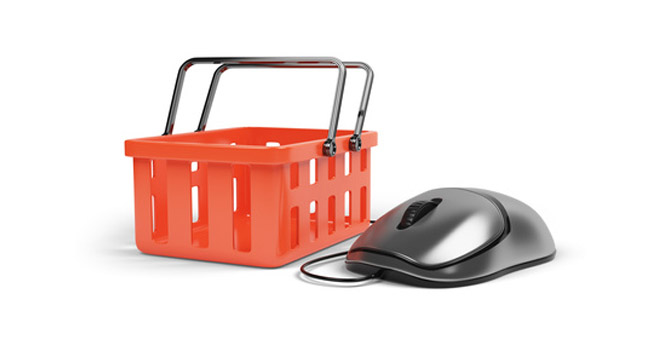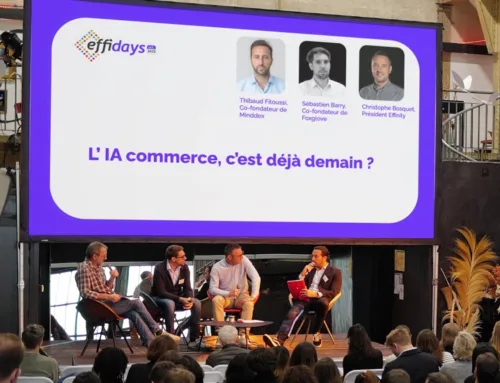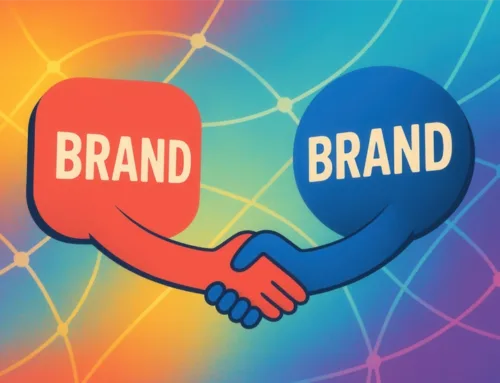Ever heard of Web-to-Store? It’s the principle of capturing a portion of Internet users on the web’s audience hubs to generate traffic and sales in-store. And this trend, known as “ROPO” (Research Online Purchase Offline), is far from anecdotal: according to Médiametrie, it concerns 77% of Internet users.
Among consumers’ motivations for this practice are the need to find out about the availability of products in store, to locate and find out the opening hours of a store near them, to search for a price, etc. However, today’s Internet user doesn’t always have easy access to this essential information, which means less trips to the store. However, today’s web users don’t always have easy access to this essential information, which means they have to spend less time in-store.
Prerequisites for implementing a Web-to-store strategy
To implement a Web-to-Store strategy, retailers need to have a store flow (list, addresses, opening hours, parking, etc.), a product flow and an inventory flow, as well as an attractive offer valid in a physical store. A Web-to-Store strategy is particularly effective when it is based on special occasions, such as the opening of a new store, stock clearance, the launch of a new collection or product, a private sale, and so on.
Most of the performance-based webmarketing levers used in e-commerce can be adapted to this objective. Initially, in order to educate the market, the Effinity affiliate marketing platform ‘s offer is essentially based on obtaining good deals, geolocation and web/shop interaction, which are declined through different supports and terminals (computer, tablet, Smartphone). The next step will be to graduallyexpand the network of affiliate partners
Good plans
The idea is to adapt the discount coupon principle, highly developed in e-commerce, through printable or downloadable coupons. Internet users can then visit a store and take advantage of a special offer. Ideally, this technique can be coupled with a “store locator” solution, to guide the Internet user to the store. The discount coupon can also take the form of a QR code.
Geolocation
Various geolocation techniques can be used to reach consumers in the vicinity of stores, such as Geofencing, which consists in geolocating consumers (with their consent) using their cell phone and sending them an offer valid in stores within a radius of 50 to 2,000 meters. In the same vein, but over a wider area, SMSing can be used to relay an attractive offer, with the possibility of integrating a discount coupon, by SMS to a geolocated target in the vicinity of a town or department.
In a more traditional way, emailing targeted by zip code or regional Facebook pages can also be effective ways of relaying attractive offers.
Web/shop interaction
Effinity also proposes to reinforce interaction between a merchant’s website and its stores, through a Click and Collect offer. This enables consumers to reserve products online before picking them up at a physical point of sale. The customer journey is based on a technical solution that geolocates the Internet user, offers him a list of nearby stores, checks that stock is available, reserves the products ordered and informs him by e-mail or SMS that he can collect his purchases.
Indicators
Two key indicators need to be closely monitored in order to steer your Web-to-Store performance campaign. The first is the impact rate, which measures the interest shown by web users in the proposed offer (for example, the number of downloads or print launches versus the number of views). The second indicator is the in-store conversion rate (the number of coupons used versus the number downloaded/printed). Finally, it is interesting to measure upsell, i.e. the percentage of additional in-store sales and/or basket value achieved by an Internet user compared with a purely physical customer.
Web-to-store implies a cross-channel strategy
Web-to-store strategy requires retailers to implement a cross-channel strategy, with implications at several levels. First of all, in their organization, since today most of them have separate teams to manage in-store and online sales, with few synergies to bring in mutual traffic. The key is to set up a multi-channel unit with a cross-functional vision, able to play on complementarity to optimize investments and improve the customer experience. The cross-channel strategy also has implications for the way in which the retailer manages its data. It must be able to centralize and exploit this data to measure the impact of the cross-channel phenomenon.
The marketing department will also be involved in proposing innovative services to optimize offline and online complementarity and build customer loyalty, such as the possibility of buying online and, if necessary, exchanging the product in a boutique. Finally, the implementation of a Web-to-Store strategy will also have an impact on logistics, since it will involve centralizing inventory management and optimizing the various delivery and returns processes.
In the near future, the Web-to-Store concept will continue to evolve. One of the key trends is undoubtedly product geolocation. The idea is to use a product search on the web to find the stores closest to the user who is selling it. With the added bonus of price and stock availability information. Today, only “small” players offer this service to retailers, but in the very near future much larger players will enter this market, such as Google, through its Shopping offer. A nascent practice, then, but one that could provide a real boost to the development of the Web-to-Store.
Mis à jour le 17 June 2025
Mis à jour le 17 June 2025




